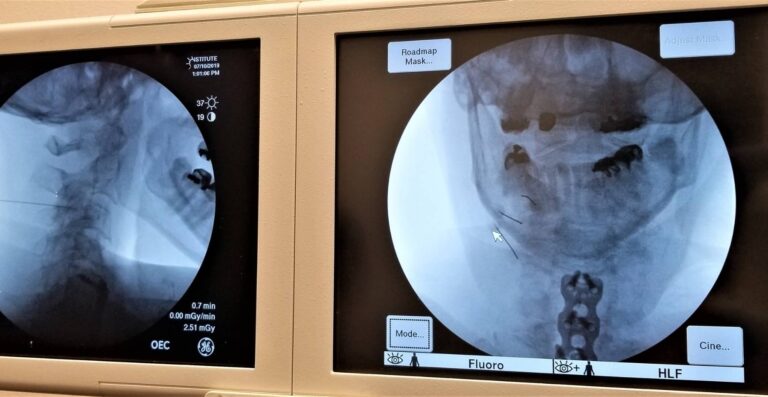When you think of chronic pain, you might imagine an older person with arthritis or someone who’s just had surgery. However, there’s another type of chronic pain that can strike anyone at any age: complex regional pain syndrome (CRPS).
Acute pain is a normal sensation that alerts us to possible injury. In fact, it typically goes away when the underlying problem has been treated. However, severe pain due to neurological disorders like CRPS persists for weeks, months, or even years.
In this article, we’ll explore the symptoms of CRPS and its possible causes. We’ll also provide some tips on how to manage this condition.
What is Complex Regional Pain Syndrome?
Complex regional pain syndrome (CRPS) is a chronic (long-lasting) pain condition that most often affects one of your arms or legs. In addition, it usually develops after an injury, surgery, heart attack, or stroke. In some cases, there may be no apparent trigger.
CRPS generally falls into two categories:
Type I, also called reflex sympathetic dystrophy syndrome (RSD), affects your peripheral nervous system, which includes the nerves that branch out from your spinal cord to the rest of your body.
Type II, also called causalgia, affects your central nervous system, which consists of your brain and spinal cord. It’s less common than type I CRPS.
Its severity also categorizes CRPS:
Mild — pain, swelling, and/or stiffness in the affected limb
Moderate — joint deformity and/or muscle atrophy (wasting) in the affected limb
Severe — all of the above plus bone loss in the affected limb
Tell me the symptoms of Complex Regional Pain Syndrome:
The most common symptom of CRPS is intense, burning pain signals in the affected limb. The pain is often out of proportion to the affected body. Other symptoms may include:
- Sensitivity to touch or temperature changes
- Swelling and/or inflammation in the affected limb
- Changes in skin temperature, color, or texture in the affected area
- Abnormal sweating
- Joint stiffness and/or muscle spasms
- Decreased ability to move the affected limb
- Changes in nail and hair growth
What causes Complex Regional Pain Syndrome?
Most CRPS is caused by damage to or malfunction of peripheral sensory neurons. These are the nerve cells that send information from your limbs to your brain.
CRPS is believed to be caused by an overactive sympathetic nervous system response. The sympathetic nervous system controls your body’s “fight-or-flight” response. This is the instinctual reaction that allows you to react quickly to a dangerous situation.
In people with CRPS, the sympathetic nervous system response is out of proportion to the original trigger. In many cases, it may be the result of a combination of genetic and environmental factors.
How is Complex Regional Pain Syndrome Diagnosed?
There’s no one test that can definitively diagnose CRPS. Instead, your doctor will likely use a combination of the following to make a diagnosis:
Medical history: Your doctor will ask about your symptoms and when they started. Additionally, they’ll also ask about your medical history, including any previous injuries or surgeries.
Physical examination: Your doctor will examine the affected area for signs of swelling, inflammation, and changes in skin color or temperature. They may also ask you to move your affected limb in different ways to check for range of motion issues.
Imaging tests: X-rays, MRIs, and bone scans may be used to rule out other conditions that cause similar symptoms.
How is CRPS treated?
There’s no one-size-fits-all approach to treating CRPS. The goal of treatment is to relieve pain and improve function. The doctor may use a combination of the following:
Medications: Over-the-counter or prescription pain relievers, antidepressants, and anticonvulsants can be used for pain management. Steroids may be used to reduce inflammation.
Physical therapy: A physical therapist can help you regain range of motion and strength in the painful limb. They may also teach you exercises to help stimulate blood flow.
Psychological counseling: CRPS can be emotionally devastating. Counseling can help you deal with the emotional aspects of the condition.
Interventional therapies: Several interventional therapies, including nerve blocks, sympathetic nerve blocks, and spinal cord stimulation, may be used for significant pain relief.
Occupational therapy: An occupational therapist can help you find ways to perform everyday tasks despite pain and range of motion issues.
How Can We Help?
If you’re suffering from CRPS, we can help. Moreover, our team of experts will work with you to develop a treatment plan that meets your needs.
At ReleviiMed, we focus on healthcare to create a stronger mind, body, and soul. We strive to give our patients the quality of life that they deserve.
To conclude, don’t let CRPS control your life. Contact us today to learn more about how we can help you live your best life.



